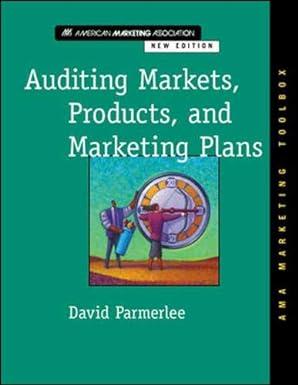Question
Part A. Which of the following is a constraint in accounting? A. Consistency B. Cost C. Comparability D. Relevance Part B. The liability created by
Part A. Which of the following is a constraint in accounting? A. Consistency B. Cost C. Comparability D. Relevance
Part B. The liability created by a business when it purchases coffee beans and coffee cups on credit from suppliers is termed a(n) A. account payable. B. account receivable. C. revenue. D. expense.
Part C. To show how successfully your business performed during a period of time, you would report its revenues and expenses in the A. balance sheet. B. statement of cash flows. C. income statement. D. retained earnings statement.
Part D. The collection of a $2900 account beyond the 2 percent discount period will result in a A. debit to Sales Discounts for $58. B. debit to Cash for $2842. C. debit to Accounts Receivable for $2900. D. debit to Cash for $2900.
Part E. The collection of a $2900 account beyond the 2 percent discount period will result in a A. debit to Sales Discounts for $58. B. debit to Cash for $2842. C. debit to Accounts Receivable for $2900. D. debit to Cash for $2900.
Step by Step Solution
There are 3 Steps involved in it
Step: 1

Get Instant Access to Expert-Tailored Solutions
See step-by-step solutions with expert insights and AI powered tools for academic success
Step: 2

Step: 3

Ace Your Homework with AI
Get the answers you need in no time with our AI-driven, step-by-step assistance
Get Started


